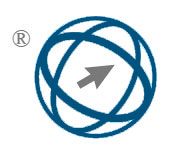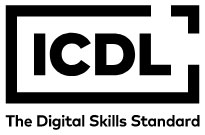Dynamic Risk Optimization in Enterprise Decisions Via Dual-Attention Temporal Graph Reinforcement Learning
Abstract
Modern business settings are complex and risk-sensitive, requiring sophisticated and adaptable solutions for informed organizational decision-making. Existing solutions use static or rule-based models that cannot dynamically analyze real-time decision risks. This research introduces DynaRisk-OptNet, a deep learning system for enterprise decision risk optimization that combines Hierarchical Dual-Attention Temporal Graph Reinforcement Network (HDAT-GRN) and Soft Actor-Critic (SAC) reinforcement learning. The model dynamically captures temporal dependencies, cross-feature interactions, and structural risk propagation. Dual attention weights and gradient-based saliency improve interpretability. Results on a real-world enterprise risk dataset showed that the system outperformed recent transformer-based benchmarks with a TRPE of 0.93, an AASI of 3.8, and an FAFS of 0.89 for feature attribution fidelity. To achieve scalability and high inference speed (17.6 ms/sample), the implementation made use of PyTorch and DGL. These findings confirm that the model is both practically applicable and easily explicable, making it an excellent choice for fast-paced, high-stakes business settings. As a result, DynaRisk-OptNet offers a robust and intelligent framework for risk-aware organizational decision optimization.
Full Text:
PDFReferences
Hettiarachchi, I. (2025). The rise of generative AI agents in finance: operational disruption and strategic evolution. International Journal of Engineering Technology Research & Management, 447.
Chaudhari, A. V., & Charate, P. A. (2025). Self-Evolving AI Agents for Financial Risk Prediction Using Continual Learning and Neuro-Symbolic Reasoning. Journal of Recent Trends in Computer Science and Engineering (JRTCSE), 13(2), 76-92.
Addy, W. A., Ajayi-Nifise, A. O., Bello, B. G., Tula, S. T., Odeyemi, O., & Falaiye, T. (2024). Machine learning in financial markets: A critical review of algorithmic trading and risk management. International Journal of Science and Research Archive, 11(1), 1853-1862.
Zhu, W., Zhang, T., Wu, Y., Li, S., & Li, Z. (2022). Research on optimization of an enterprise financial risk early warning method based on the DS-RF model. International review of financial analysis, 81, 102140.
Zhao, Z., Li, D., & Dai, W. (2023). Machine-learning-enabled intelligence computing for crisis management in small and medium-sized enterprises (SMEs). Technological Forecasting and Social Change, 191, 122492.
Song, Y., Du, H., Piao, T., & Shi, H. (2024). Research on financial risk intelligent monitoring and early warning model based on LSTM, transformer, and deep learning. Journal of Organizational and End User Computing (JOEUC), 36(1), 1-24.
Sun, R., Stefanidis, A., Jiang, Z., & Su, J. (2024). Combining transformer based deep reinforcement learning with Black-Litterman model for portfolio optimization. Neural Computing and Applications, 36(32), 20111-20146.
Khan, R. S., Sirazy, M. R. M., Das, R., & Rahman, S. (2022). An ai and ml-enabled framework for proactive risk mitigation and resilience optimization in global supply chains during national emergencies. Sage Science Review of Applied Machine Learning, 5(2), 127-144.
Amiri, Z., Heidari, A., Zavvar, M., Navimipour, N. J., & Esmaeilpour, M. (2024). The applications of nature‐inspired algorithms in Internet of Things‐based healthcare service: A systematic literature review. Transactions on Emerging Telecommunications Technologies, 35(6), e4969.
Glette-Iversen, I., Flage, R., & Aven, T. (2023). Extending and improving current frameworks for risk management and decision-making: A new approach for incorporating dynamic aspects of risk and uncertainty. Safety science, 168, 106317.
Fernández, P. M. G., López, A. J. G., Márquez, A. C., Fernández, J. F. G., & Marcos, J. A. (2022). Dynamic Risk Assessment for CBM-based adaptation of maintenance planning. Reliability engineering & system safety, 223, 108359.
Ahmed, Hazza Bin, and Mohammad alzuoubi. “Designing Accessible Virtual Reality Interfaces Using Reinforcement Learning for Users with Motor and Sensory Impairments.” PatternIQ Mining, vol. 2, no. 1, 24 Feb. 2025, https://doi.org/10.70023/sahd/250201. Accessed 5 Mar. 2025.
Crovini, C., Santoro, G., & Ossola, G. (2021). Rethinking risk management in entrepreneurial SMEs: towards the integration with the decision-making process. Management Decision, 59(5), 1085-1113.
Settembre-Blundo, D., González-Sánchez, R., Medina-Salgado, S., & García-Muiña, F. E. (2021). Flexibility and resilience in corporate decision making: a new sustainability-based risk management system in uncertain times. Global Journal of Flexible Systems Management, 22(Suppl 2), 107-132.
Rajagopal, N. K., Qureshi, N. I., Durga, S., Ramirez Asis, E. H., Huerta Soto, R. M., Gupta, S. K., & Deepak, S. (2022). Future of business culture: An artificial intelligence‐driven digital framework for organization decision‐making process. Complexity, 2022(1), 7796507.
Hu, K. H., Chen, F. H., Hsu, M. F., & Tzeng, G. H. (2023). Governance of artificial intelligence applications in a business audit via a fusion fuzzy multiple rule-based decision-making model. Financial Innovation, 9(1), 117.
Cui, Y., & Yao, F. (2024). Integrating deep learning and reinforcement learning for enhanced financial risk forecasting in supply chain management. Journal of the Knowledge Economy, 1-20.
Yang, T., Li, A., Xu, J., Su, G., & Wang, J. (2024). Deep learning model-driven financial risk prediction and analysis. Applied and Computational Engineering, 77, 196-202.
Oyewola, D. O., Akinwunmi, S. A., & Omotehinwa, T. O. (2024). Deep LSTM and LSTM-Attention Q-learning based reinforcement learning in oil and gas sector prediction. Knowledge-Based Systems, 284, 111290.
Wang, X., Mazumder, R. K., Salarieh, B., Salman, A. M., Shafieezadeh, A., & Li, Y. (2022). Machine learning for risk and resilience assessment in structural engineering: Progress and future trends. Journal of Structural Engineering, 148(8), 03122003.
Hu, H., Jiang, S., Goswami, S. S., & Zhao, Y. (2024). Fuzzy integrated Delphi-ISM-MICMAC hybrid multi-criteria approach to optimize the artificial intelligence (AI) factors influencing cost management in civil engineering. Information, 15(5), 280.
Safaeian, M., Moses, R., Ozguven, E. E., & Dulebenets, M. A. (2024). An optimization-based risk management framework with risk interdependence for effective disaster risk reduction. Progress in Disaster Science, 21, 100313.
Riad, M., Naimi, M., & Okar, C. (2024). Enhancing Supply Chain Resilience Through Artificial Intelligence: Developing a Comprehensive Conceptual Framework for AI Implementation and Supply Chain Optimization. Logistics, 8(4), 111.
Shahbazi, Z., Jalali, R., & Shahbazi, Z. (2025). Enhancing Recommendation Systems with Real-Time Adaptive Learning and Multi-Domain Knowledge Graphs. Big Data and Cognitive Computing, 9(5), 124.
https://www.kaggle.com/datasets/ao00137/Business Risk Management
DOI: https://doi.org/10.31449/inf.v49i9.9692

This work is licensed under a Creative Commons Attribution 3.0 License.









